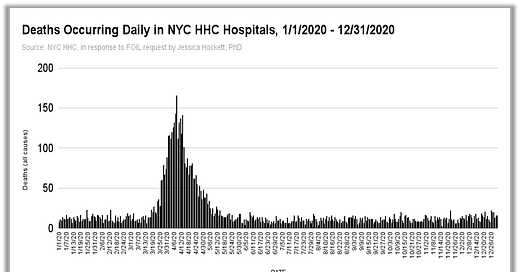I’m finally sharing all-cause death data I obtained from NYC Health + Hospitals Corporation (HHC), the agency which operates the city’s eleven public hospitals, including “epicenter of the epicenter” Elmhurst Hospital in Queens.
I requested all-cause daily deaths in HHC’s eleven public hospitals, for 2017 through 2020. (See previous article for backgrou…



